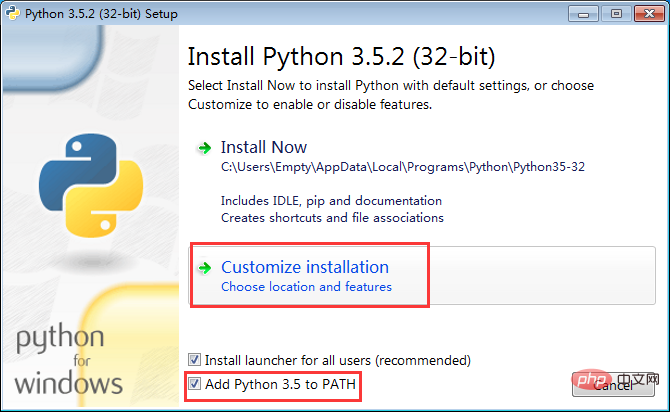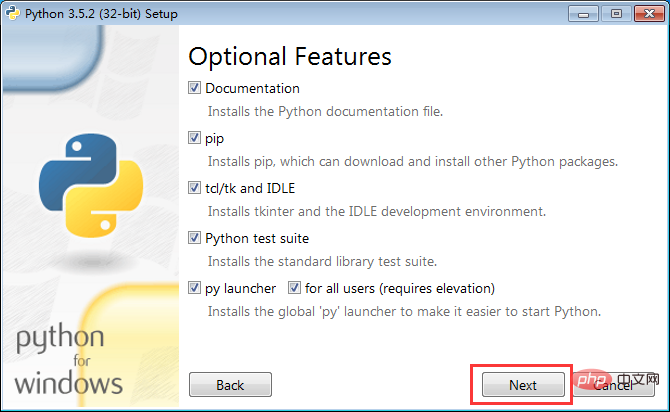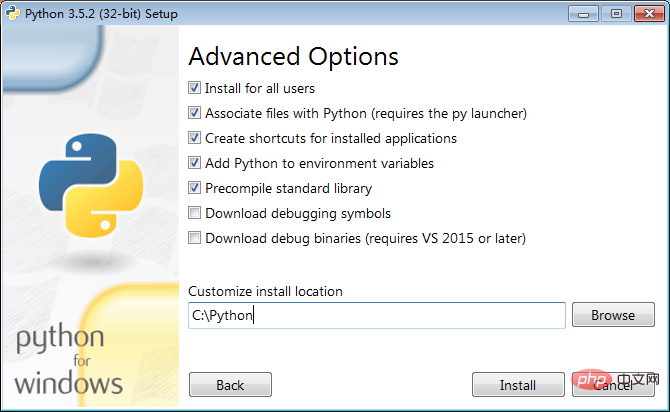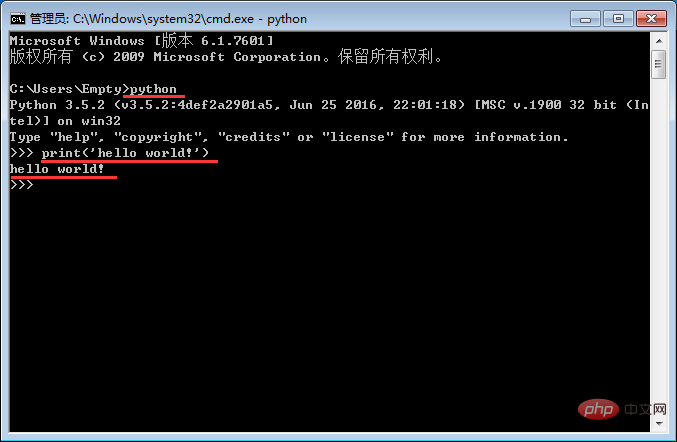Home >Backend Development >Python Tutorial >How to install python environment

1. Prepare the installation package
1) Go to the python official website to download the python operating environment (https://www.python.org/downloads/), currently compared The stable one is python-3.5.2
2) Go to the pycharm official website to download the latest version of the IDE (http://www.jetbrains.com/pycharm/download/#section=windows). The official website provides mac, There are three versions of windows and linux. I downloaded pycharm-community-2016.2.3.exe
3) Go to the postgresql official website to download the latest version of the database (https://www.postgresql.org/download/ windows/ After opening the page, click Download the installer to enter the download page, then select the version and operating system, and then click Download), I downloaded postgresql-9.6.5-1-windows-x64.exe
2 .Install the software
1) Install the python operating environment
Double-click python-3.5.2.exe

Generally use custom installation comparison Okay, otherwise the automatic installation will install the environment into the personal directory, which is sometimes very troublesome to find. In addition, mark the check mark in front of the second red box, otherwise you need to manually add the python installation path to the path of the Windows environment variable


Manually modify the installation path here, you can install it to the C drive or the D drive

Complete the installation
Then we open CMD, enter python in it, and then we can directly enter the encoding
We can enter print('hello world!') to test it python runs, as shown below

The above is the detailed content of How to install python environment. For more information, please follow other related articles on the PHP Chinese website!